2025 Social Media Phishing Guide: How Scammers Trick You and How to Stay Safe
You might scroll past ads, ignore random DMs, and laugh at obvious scams—but some phishing attacks are too clever to spot.
In 2025, social media phishing isn't just fake messages. It's hijacked accounts, AI-generated scams, and traps so polished they can fool even tech-savvy users.
This guide explains how these attacks work, the red flags to watch for, and what to do if you get caught.
Social Media Phishing Explained
Social media phishing is basically a scam where someone pretends to be a person or brand you trust on social media apps like Instagram, Facebook, X, LinkedIn, TikTok, and Snapchat. They try to trick you into handing over information you wouldn't normally give a stranger, like your password, credit card info, or even access to your entire account.
The bait could be a fake login page, a message that looks like it's from a friend, or an offer that's just a little too good to be true. Phishing isn't only about losing your password. Once a scammer gets in, they can:
- Lock you out of your own account and pretend to be you.
- DM your friends or followers to lure them into the same trap.
- Use stolen info to break into your other accounts (banking, shopping, work emails, etc.).
- Dig into your personal life for data they can sell or exploit later.
How Phishing Attacks Target Social Media
Ppeople trust what they see, and unfortunately scammers exploit this simple truth. A familiar logo, a message from a "friend," or an ad that looks legit—they all create that split second of doubt where you might click before thinking.
Here are some of the common ways social media phishing scams work:
Fake Login Pages/Spoofed Websites
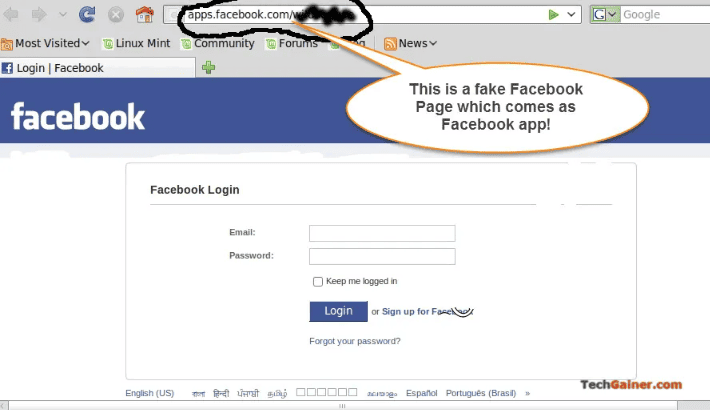
Scammers create near-perfect copies of real login pages for popular platforms like Facebook and Instagram designed to trick you into entering your credentials.
They'll typically create a sense of urgency by sending a "security alert" link or a "your account will be suspended" warning. When you click the link, you'll land on a lookalike site with the same colors, logos, and layout, but every keystroke goes straight to the scammer.
The URL looks almost right (think "facebook-login.com" instead of "facebook.com"), but the moment you type in your password, phishers have got the keys to your account.
To spot this type of scam, always check the URL before typing anything. Also, never log in via links in DMs or emails—go directly to the official site or app.
Impersonation Accounts
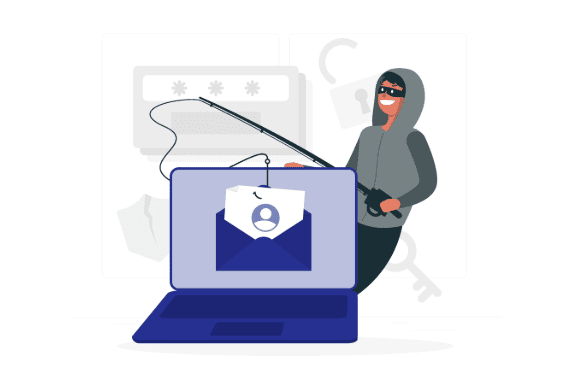
Here's the thing: on social media, anyone can slap your friend's profile picture on a new account and pretend to be them.
Scammers often copy everything: photos, captions, even the "about" section. Then they message you (or your contacts) directly, asking for a "favor," a "loan," or to click a "must-see" link.
They often target businesses too, pretending to be brands, influencers, or even CEOs, making their request sound legit. Since the profile looks familiar, your guard is down. Before you know it, you're sharing details you'd normally keep private, or sending money straight into a scammer's pocket.
Malicious Links in DMs or Comments

A message pops up: "Check this out!" or "Is this you in this video?" Your curiosity takes over, you click, and suddenly you're on a unknown, potentially dangerous site—or downloading malware without realizing it.
Scammers love planting these traps in DMs or public comment sections because they feel personal and urgent. In fact, sometimes the sender is a real friend whose account was already hacked, so the link looks completely trustworthy.
A rule of thumb is if the link looks suspicious or if you weren't expecting it, don't click it. You can also hover over links (on desktop) to preview the real URL.
Giveaway Scams or "You Won" Messages

We all have received those messages: "Congratulations! You've won an iPhone 15! Click here to claim!" Spoiler: You didn't win, and that link goes nowhere good.
These scams prey on FOMO, asking for "shipping fees" or personal details to "verify" your prize. That's where they grab your personal details or credit card info.
These messages may come as DMs, tagged posts, or even official-looking graphics from fake accounts. The promise of something free is powerful, but if it's too good to be true, it's probably phishing bait in shiny packaging.
Phishing Via Ads or Sponsored Posts

Yes, even paid content can be malicious. Scammers sometimes pay for sponsored posts that look like legit offers, news stories, or brand promos. They might even run fake Shopify stores, "free iPhone" ads, or fake antivirus promotions.
You click through, and instead of the product or service you expected, you land on a phishing page. These fake ads can be incredibly convincing—using stolen brand logos, slick graphics, and real-sounding reviews.
Since paid ads can show up in your feed like any other legitimate promotion, it's easy to forget to double-check before clicking. The best way to stay safe from these scams is to treat every link like a stranger at your door—verify and research brands before clicking ads.
Red Flags: How to Spot a Social Media Phishing Attack
Scammers constantly find new, sneaky ways to hide under the radar. Still, they'll almost always leave clues. If you know what to look for, you can spot the warning signs before you click, type, or share anything you'll regret. Keep your eyes open for these phishing red flags:
- Urgent or threatening language: Messages that say "Your account will be deleted in 24 hours!" are meant to scare you into acting fast without thinking. Nothing's going to happen in reality.
- Suspicious links: If the URL looks odd (e.g., shortened URLs), has extra characters, or doesn't match the official site (e.g., "facebok.com"), don't click it.
- Too-good-to-be-true offers: Free gadgets, luxury trips, that $50 iPhone, or huge cash prizes with no strings? Probably bait.
- Spelling or grammar mistakes: Professional companies proofread; scammers often don't.
- Requests for sensitive info: Any DM asking for passwords, verification codes, or credit card numbers is a hard no. And if it's your "friend" suddenly messaging you with a random link or an out-of-character request, their account might be hacked.
- Impersonation of trusted contacts or brands: That "Netflix Support" account DMing you from a profile with 12 followers? Fake.
Social Media Phishing: Prevention Tips for You and Your Family
You've seen how phishing works, now let's make sure it doesn't work on you. Aside from the basics, like not clicking suspicious links and keeping your login details private, there are a few extra steps you can take to stay ahead of scammers:
- Review your privacy settings regularly: Limit who can see your posts, profile info, and contact details. Avoid using "public" viewing settings.
- Use a password manager: A reliable password manager offers serval benefits. Firstly, it generates (and remembers) strong, unique passwords so one breach doesn't domino into others. Also, it can autofill only on legitimate sites, helping you avoid fake login pages.
- Double-check "official" messages: Platforms like Instagram or Facebook won't ask for your password via DM. If in doubt, go directly to the app or website—don't trust links.
If you're a parent or guardian, the stakes are even higher. Teens are especially vulnerable to phishing attempts disguised as friend requests, "free" offers, or fake contests. They're tech-savvy but often overlook red flags. A single click could mean stolen personal info—or worse, access to your family's accounts.
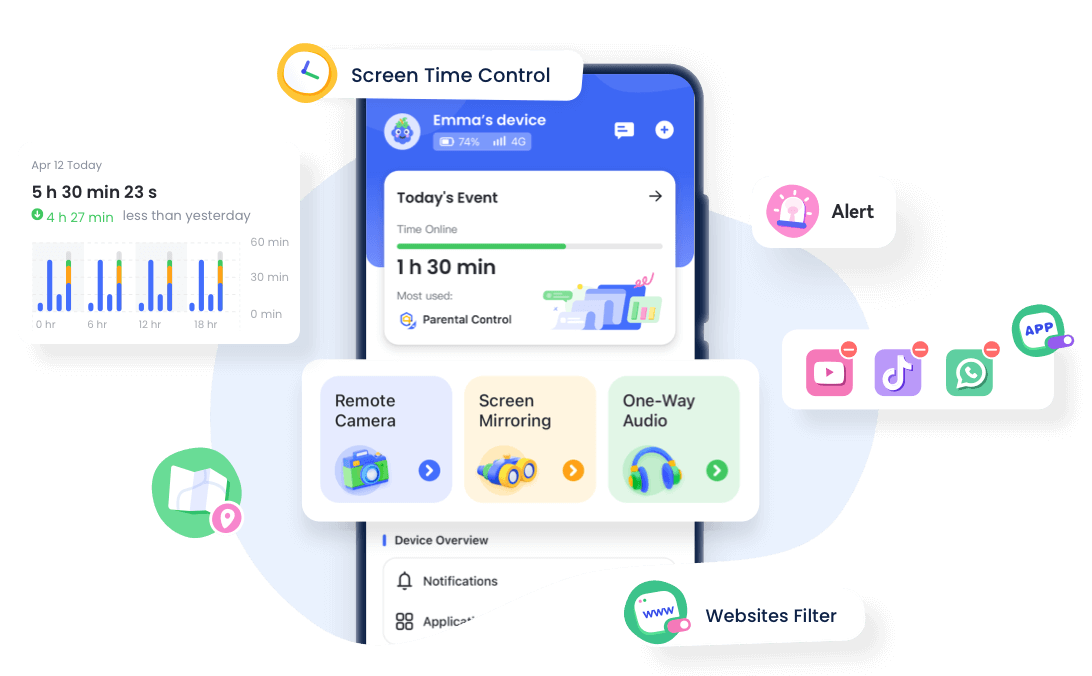
That's where AirDroid Parental Control comes in. It helps you (and your child) stay one step ahead and avoid falling for scams. With AirDroid Parental Control, you can:
- Monitor app usage to spot suspicious social media activity.
- Block risky websites and malicious links.
- Receive instant alerts for unusual app behavior.
- Track location to ensure they're safe offline, too.
- View real-time device screens to guide them if they encounter a phishing attempt.
Real-Life Social Media Phishing Scams You Should Know

All of the above isn't just theory. There have been a few jaw-dropping incidents where phishing went from "digital nuisance" to "headline-making disaster."
Back in July 2020, hackers pulled off one of the wildest social media stunts in history. They used social engineering to gain access to Twitter's internal tools and then hijacked over 130 high-profile verified accounts—including Barack Obama, Elon Musk, Bill Gates, and Apple. Before anyone caught on, tweets went out promising double-bitcoin returns, and followers sent over $110,000 worth of crypto. It was so brazen, the FBI and other agencies immediately launched investigations.
On LinkedIn, the phishing never stopped. Scammers impersonate recruiters, post fake job offers, and lure job seekers into giving away credentials or personal info. The platform has had to issue multiple advisories and take down millions of bogus accounts.
And in the UK, Facebook and Instagram shopping or giveaway scams are rampant. In fact, Lloyds Banking Group reports that 68% of all online purchase scams start on these platforms, costing consumers over £27 million annually as recently as 2023.
What to Do If You Get Tricked
Even if you accidentally clicked the wrong link or typed your password where you shouldn't have, there's no need to panic. It happens to the best of us—what matters is acting fast. Here's exactly what to do next to limit the damage:
- Change your passwords immediately: Update the affected account and any others using the same password. Use a strong, unique passphrase that's a combination of letters, numbers, and special characters.
- Enable two-factor authentication (2FA): Add an extra layer of security so hackers can't get back in, even with your password. Most social media platyforms let you choose from email, SMS, or app-based codes for a secondary authentication method.
- Check connected apps & permissions: Revoke access for any suspicious third-party apps linked to your account. You can find this inside your device settings under app permissions.
- Scan for malware: If you suspect you might've installed something nasty from a shady website, run a security check on your device. You can either use your device's built-in security features or a trusted third-party anti-malware tool.
- Report the phishing attempt: Use the platform's reporting tools to flag the scammer's account or message. They'll remove the phishing post or profile based on your report.
- Warn your contacts: Give friends a heads-up in case the scammer starts messaging them from your account.
- Monitor financial accounts: If you entered payment details, keep an eye out for unauthorized charges. If you notice any suspicious activity, inform your bank immediately.
Conclusion
Social media opens doors to friends, opportunities, and communities, but it can also open doors to scammers if you're not careful. The more you understand how these attacks work, the easier it is to spot the traps and shut them down before they cause damage.
With the help of this guide, you've now got the insider knowledge to spot shady links, shut down impersonators, and recover if things go sideways.
And you don't have to do it all alone. Tools like AirDroid Parental Control can act as safety net, helping you spot red flags, guide safer browsing, and keep an eye on the accounts that matter most.



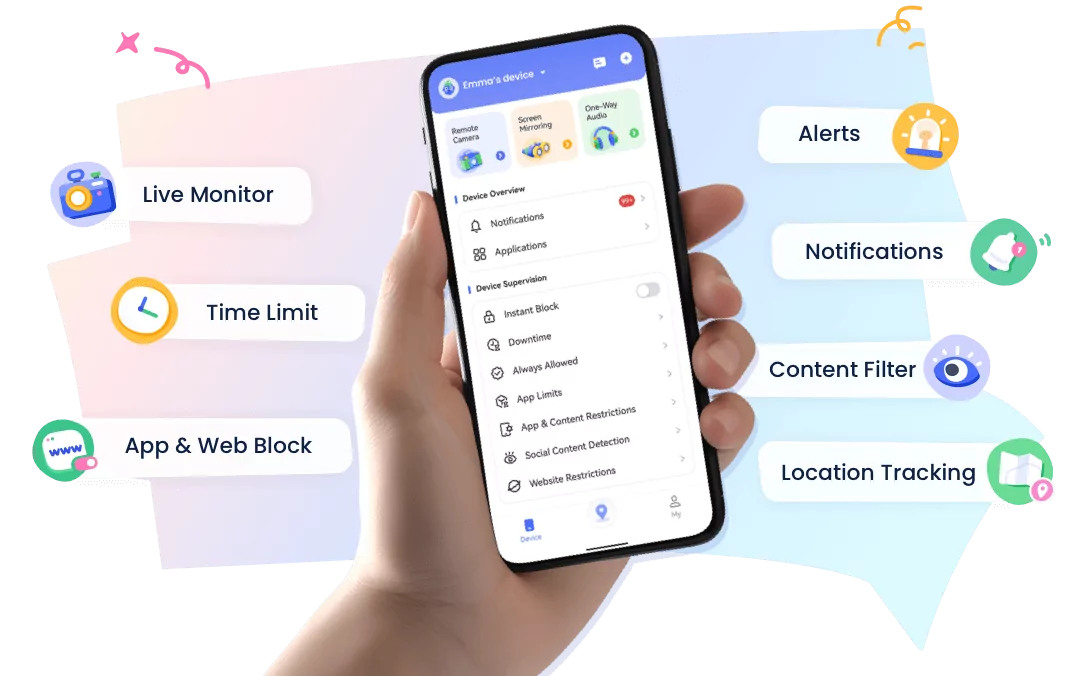






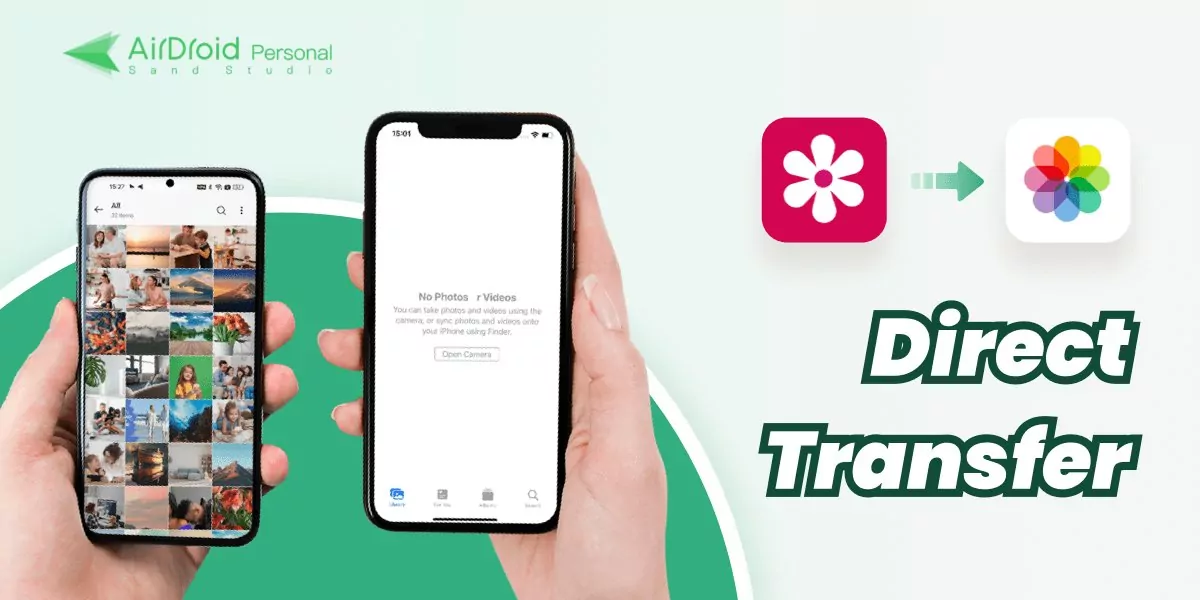





Leave a Reply.